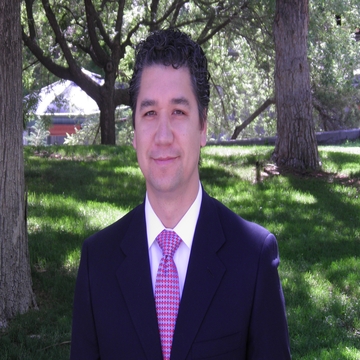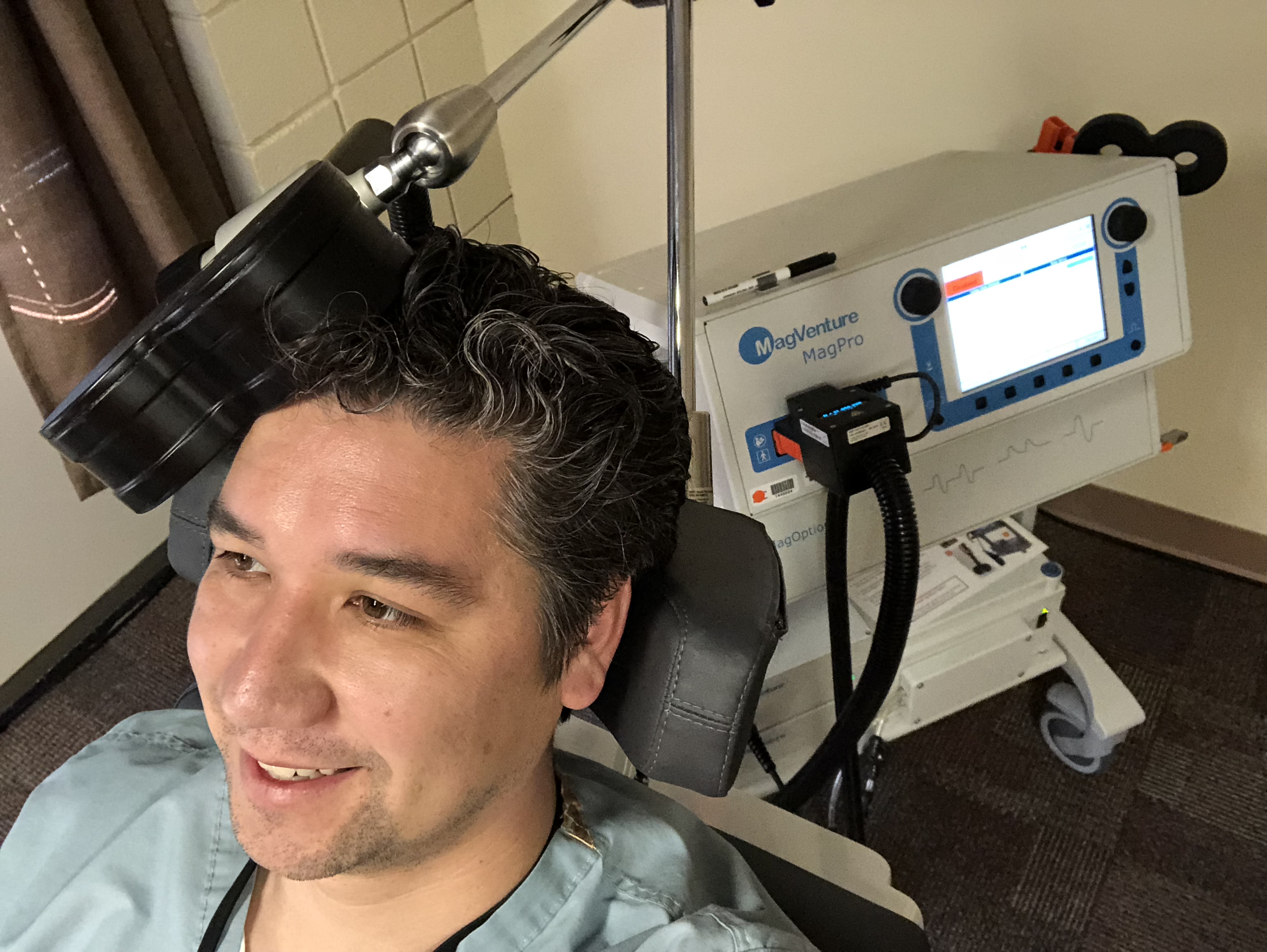Machine Learning Discovers Previously Unknown Genes in New UNM-Led Study

Power of Attraction
Transcranial Magnetic Stimulation Treats Mild to Moderate Depression
Settling back into the comfortably padded chair, you might well be reminded of a checkup at the dentist's office.
But then a black plastic contraption attached to a steel arm is positioned close to your head, at a point a few inches above your left eyebrow. Someone flips a switch, and for a few seconds you experience a strange staccato tapping sensation, as if a tiny woodpecker was hammering away at your scalp.
That's how people typically describe treatments with transcranial magnetic stimulation (TMS), an FDA-approved method for treating depression that is quickly gaining in popularity.
"TMS is optimally used in mild to moderate depression that has not responded to pharmacotherapy or psychotherapy," says Davin Quinn, MD, associate professor in UNM's Department of Psychiatry & Behavioral Sciences. "It takes several weeks for the benefits to start to accrue, and the effects last for months after the treatment has been stopped."
Paired electromagnets precisely deliver rapid pulses of energy to the left dorsolateral prefrontal cortex, a brain region that goes quiet in patients with depression, Quinn says. "We think there could be a couple of things happening when you deliver magnetic pulses to the brain," he says, explaining that the therapeutic effect has to do with the differing roles played by the brain's left and right hemispheres.
In the brain scans of depressed patients, "we can see that the metabolic activity and blood flow of the left frontal lobe are underactive," Quinn says. That's a problem, he says, because the left frontal lobe normally counteracts the right brain's "melancholic" tendencies.
Repeated rounds of magnetic stimulation appear to excite the neurons in the left frontal lobe so that they resume their normal activity. "After you've delivered stimulation and the patient experiences the therapeutic effect, you see the restoration of the brain's normal variability on functional neuroimaging," Quinn says.
The technology was first developed in the late 1980s and tested for its therapeutic potential before winning FDA approval. UNM brought its TMS service online last spring, Quinn says.
The TMS clinical team - Quinn, nurse Angela Tisdale and medical technician Tania Madero, see as many as half a dozen patients a day in their outpatient clinic at the UNM Psychiatric Center for a course of treatment that lasts for six weeks. Magnetic energy pulsing 10 times per second is delivered in four-second bursts, followed by an 11-second rest period. The cycle continues for a total of 18 minutes.
There are few side effects, and patients usually start to report feeling better about halfway through the treatment, Quinn says.
"Initially, people are apprehensive yet hopeful," he says, adding that the treatments start with low-intensity magnetic fields that are gradually increased in strength. "Once they settle into the protocol, they're usually quite comfortable."
